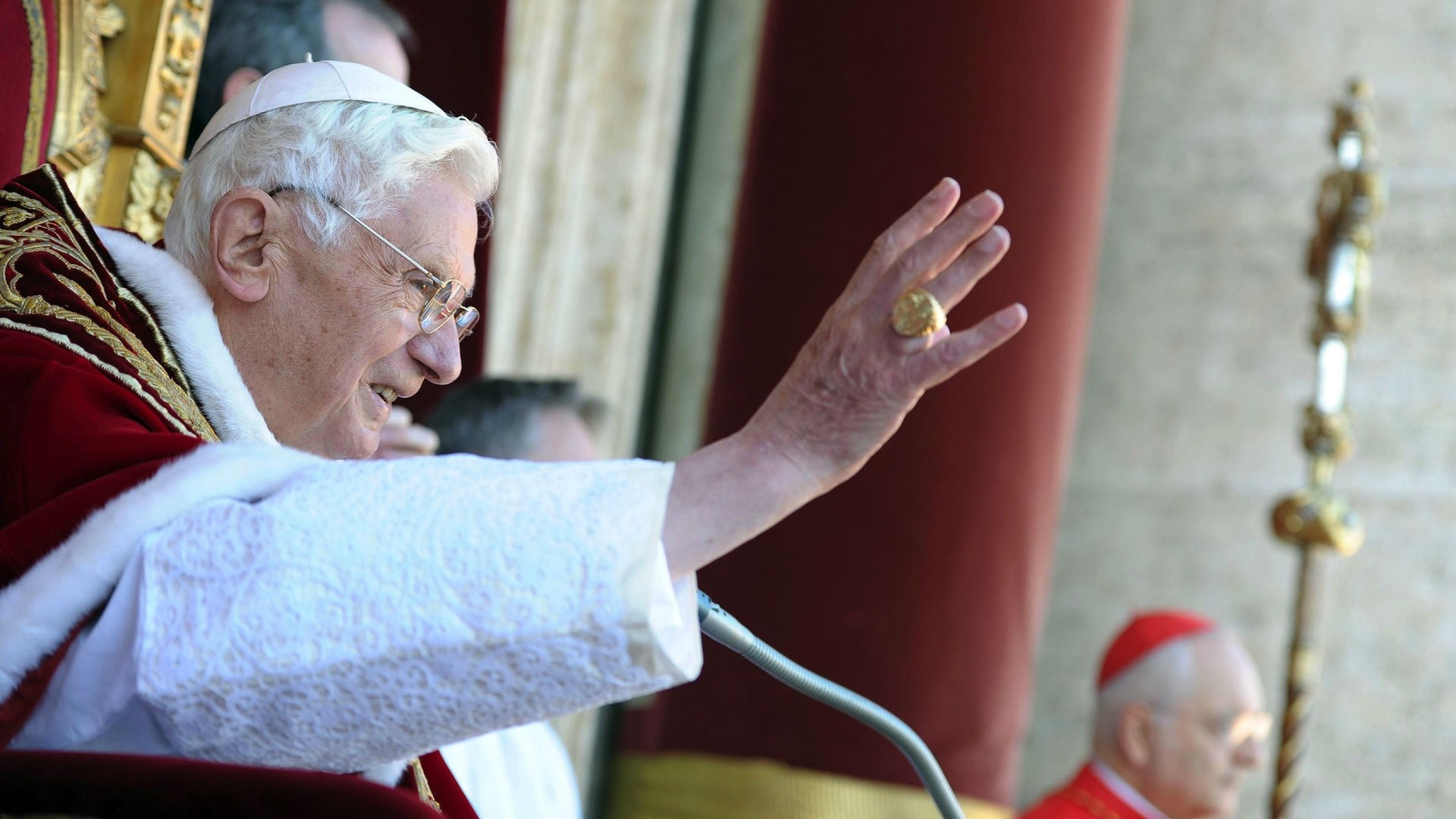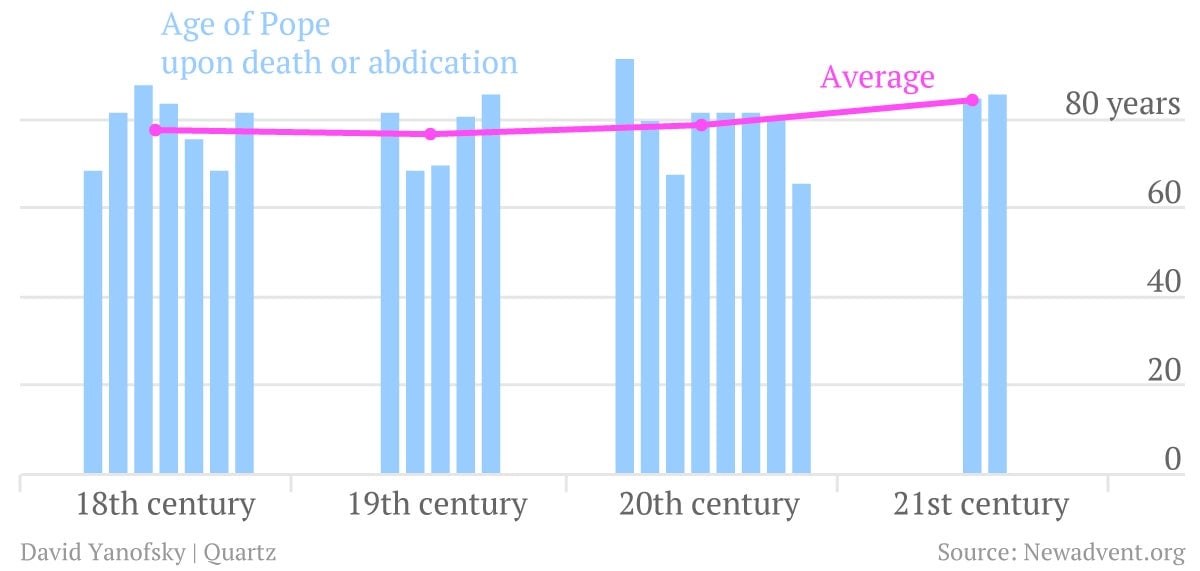Popes aren’t getting any younger: Four centuries of papal aging in one chart
Pope Benedict XVI surprised the world by announcing that, due to his “advanced age,” he was resigning as head of the Catholic Church (the text of his letter is here).


Pope Benedict XVI surprised the world by announcing that, due to his “advanced age,” he was resigning as head of the Catholic Church (the text of his letter is here).
When Benedict steps down at the end of this month, his 85 years, 10 months and 12 days will make his the third-oldest age at which a pope left office since the 1700s (all of the others died in office). Beating out Benedict were Pope Leo XIII, who lived until he was 93, dying in 1903, and Clement XII, who died in 1740 at 87. That led us to wonder: With most people living longer, are popes also getting older?
Evidently, they are. The average age of the pope at the time of his death (or in Benedict’s case, retirement) has risen seven years since the 18th century.
But that seven-year increase isn’t actually very much when compared to the life expectancies of the larger population. Popes have been making it to a ripe old age for a long time, a sign perhaps of how far above the masses the papal living-standards tended to be.
In the mid-19th century, the average European lived only until his early 40s (pdf, p.1), whereas the average age of the pope during that time was 77. And though global life expectancy has exploded over the last two hundred years, papal aging increased only marginally. The average age of the pope (at the time of death or resignation) was 77.6 in the 18th century, 76.7 in the 19th century, 78.4 in the 20th century, and 84.5 so far the 21st century (albeit, with just two datapoints).
